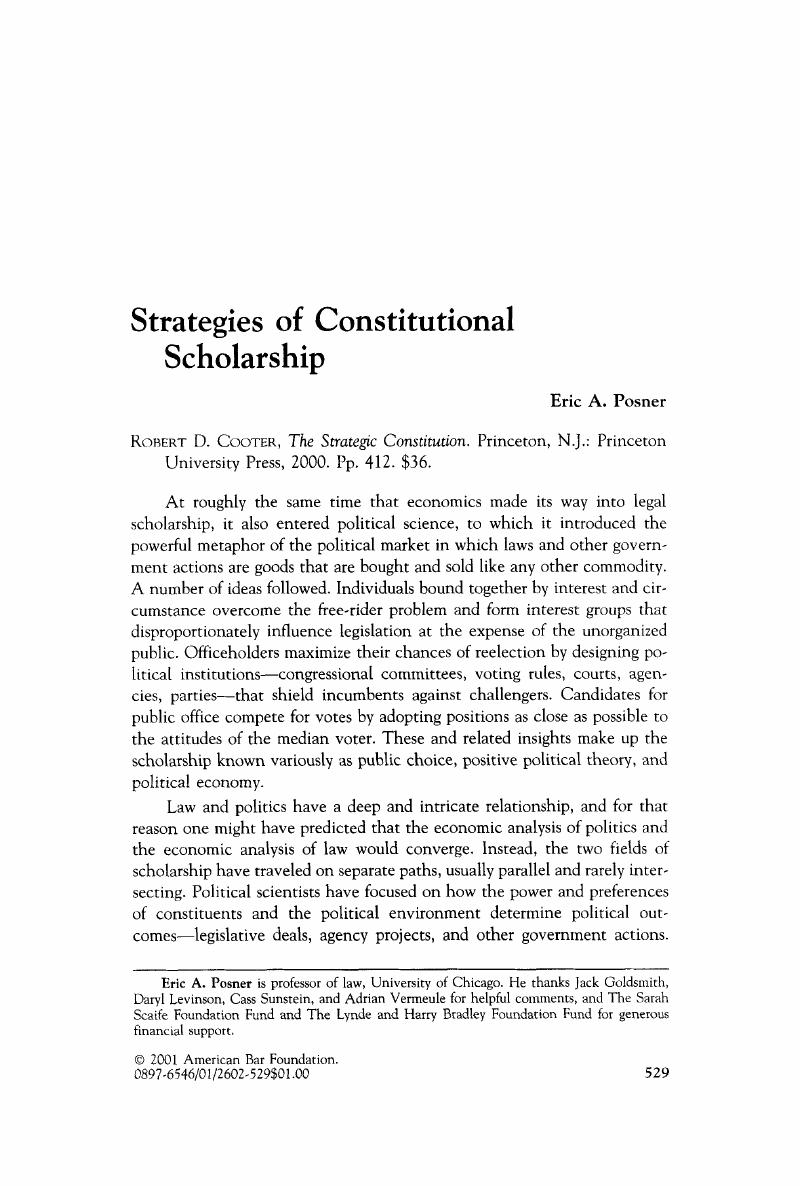Crossref Citations
This article has been cited by the following publications. This list is generated based on data provided by Crossref.
Feldman, Stephen M.
2005.
The Rule of Law or the Rule of Politics? Harmonizing the Internal and External Views of Supreme Court Decision Making.
Law <html_ent glyph="@amp;" ascii="&"/> Social Inquiry,
Vol. 30,
Issue. 1,
p.
89.
Lee, Ian B.
2008.
Can Economics Justify the Constitutional Guarantee of Freedom of Expression?.
Canadian Journal of Law & Jurisprudence,
Vol. 21,
Issue. 2,
p.
355.





